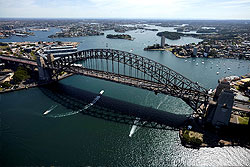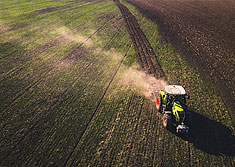NAATI Certified Translation for Tarragindi
Certified translation examples from Sydney Translation Services.
Driver License
Birth Certificate
Passport Translation
Marriage Certificate
Death Certificate
Divorce Certificate
Degree Certificate
No-Criminal Record
The Gupapuyngu Language

- Unique Phonology: Gupapuyngu, a Yolŋu Matha language of North-East Arnhem Land, features a rich phonological system with distinct sounds that are uncommon in many other languages. Translators must be attuned to the specific sounds and pronunciations to accurately convey meaning, especially when dealing with oral histories or culturally significant texts.
- Oral Tradition: Gupapuyngu is traditionally an oral language, with written forms developed more recently. As such, much of the translation work involves transcribing spoken language, which requires a deep understanding of cultural context and oral storytelling techniques.
- Contextual Sensitivity: Many words and phrases in Gupapuyngu are deeply tied to cultural practices and the local environment. Translators need to ensure that these cultural nuances are preserved in the translation, especially when dealing with ceremonial or traditional knowledge, where mistranslation could lead to significant misinterpretations.
- Translating Legal and Educational Documents: Gupapuyngu is increasingly used in legal and educational contexts, especially in the Northern Territory. Translators working on these types of documents need to ensure that the correct legal and academic terminology is employed, respecting both the traditional language structure and the specific requirements of official communication.
About Tarragindi
 Tarragindi is a suburb on the southern side of Brisbane, Queensland, Australia. It is represented through the Holland Park and Moorooka Ward councillors on the Brisbane City Council. The suburb appears to have been named after a native from the Loyalty Islands (near modern-day New Caledonia) who was transported in the late nineteenth century to Queensland. Such people, called Kanakas, were a cheap source of labour for sugarcane production. Apparently he escaped and was subsequently employed by Alfred Foote of Ipswich. Later, he cleared land for William Grimes (related to Alfred Foote) on a hill near Sandy Creek and the property was named after him.
Tarragindi is a suburb on the southern side of Brisbane, Queensland, Australia. It is represented through the Holland Park and Moorooka Ward councillors on the Brisbane City Council. The suburb appears to have been named after a native from the Loyalty Islands (near modern-day New Caledonia) who was transported in the late nineteenth century to Queensland. Such people, called Kanakas, were a cheap source of labour for sugarcane production. Apparently he escaped and was subsequently employed by Alfred Foote of Ipswich. Later, he cleared land for William Grimes (related to Alfred Foote) on a hill near Sandy Creek and the property was named after him.
Tarragindi remained with the Foote family in Ipswich until just before he died, aged 63. The grave of Tarra Gindi Tasserone is located in the Ipswich Cemetery. Prior to European occupation beginning in the early 19th century the area covered by the suburb was inhabited by Aboriginal people. According to Kidd (2000) the Coorparoo sub-group of the wider Jagera group occupied land south of the Brisbane River clustered around Oxley, Norman and Bulimba creeks. It is also possible that the Yerongpan sub-group lived in the area (BRISbites, n.d.). The Coorparoo group had cultural links to other neighboring communities including territorially-neutral pathways, river crossings and ceremonies.
A bora ring was known to have been maintained in Tarragindi, possibly between present-day Barnehurst and Isabella Streets (BRISBites, n.d.). One trace of this early occupation persists in the locality and creek name, "Ekibin". According to Queensland Department of Natural Resources and Mines (2003) the modern name is derived from the aboriginal "Yekkabin" which referred to aquatic plants (possibly Typha angustifolia or Blechnum indicum) with edible roots which grew in the creek. According to Potter (n.d.) the edible roots were common in the diet of Aboriginals of the Moreton Bay area. A sharp stick was used to dig out the stem, which was then dried, roasted, and pounded with a stone.
Other Gupapuyngu Translation Service Locations
Rochedale Gupapuyngu Translator, Rocklea Gupapuyngu Translator, Salisbury Gupapuyngu Translator, Tennyson Gupapuyngu Translator, Tingalpa Gupapuyngu Translator, Wishart Gupapuyngu Translator.




 Tarragindi is a suburb on the southern side of Brisbane, Queensland, Australia. It is represented through the Holland Park and Moorooka Ward councillors on the Brisbane City Council. The suburb appears to have been named after a native from the Loyalty Islands (near modern-day New Caledonia) who was transported in the late nineteenth century to Queensland. Such people, called Kanakas, were a cheap source of labour for sugarcane production. Apparently he escaped and was subsequently employed by Alfred Foote of Ipswich. Later, he cleared land for William Grimes (related to Alfred Foote) on a hill near Sandy Creek and the property was named after him.
Tarragindi is a suburb on the southern side of Brisbane, Queensland, Australia. It is represented through the Holland Park and Moorooka Ward councillors on the Brisbane City Council. The suburb appears to have been named after a native from the Loyalty Islands (near modern-day New Caledonia) who was transported in the late nineteenth century to Queensland. Such people, called Kanakas, were a cheap source of labour for sugarcane production. Apparently he escaped and was subsequently employed by Alfred Foote of Ipswich. Later, he cleared land for William Grimes (related to Alfred Foote) on a hill near Sandy Creek and the property was named after him.